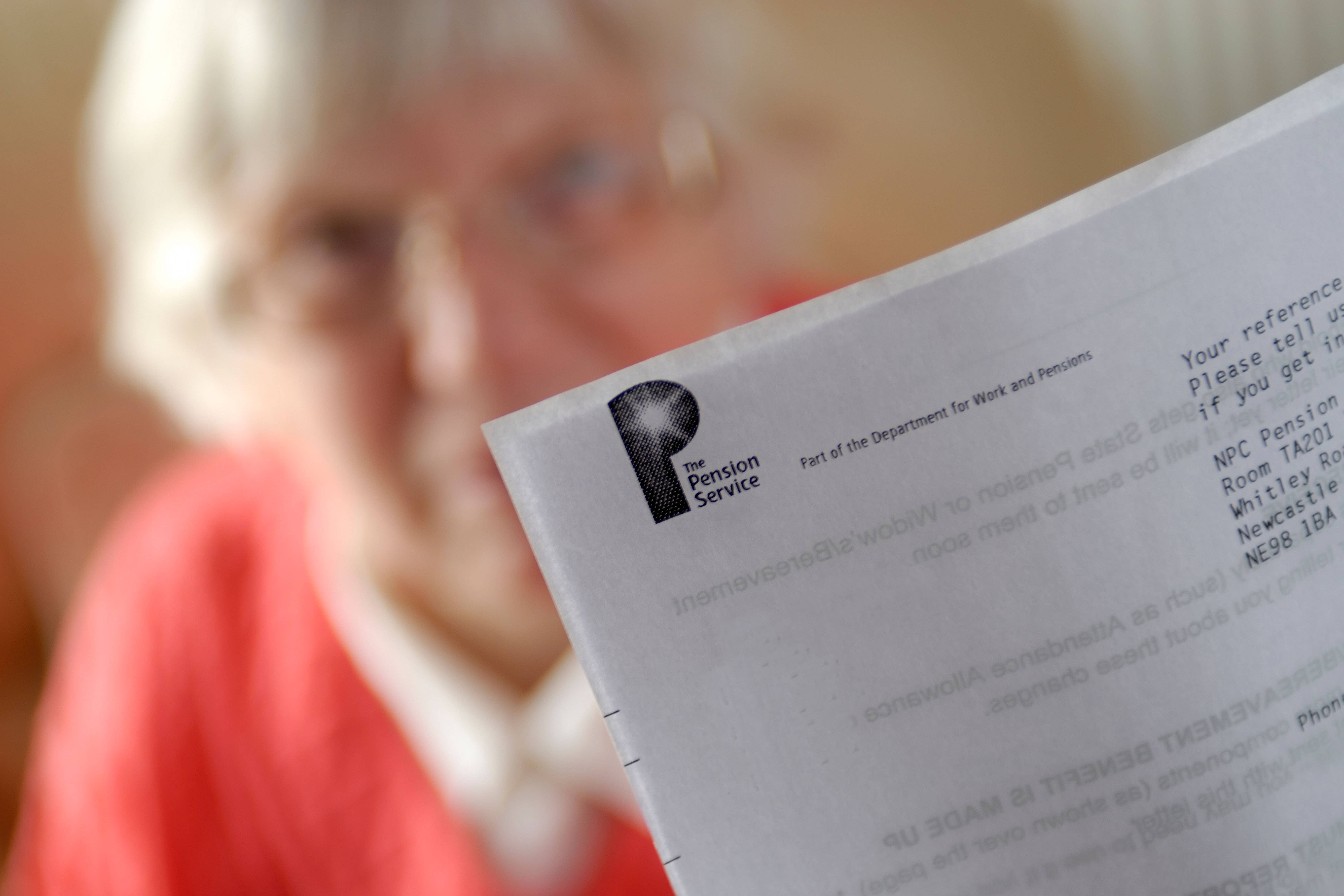Pensioners set for income boost but more could be dragged into tax net – experts
Earnings figures released by the Office for National Statistics on Tuesday indicate that the state pension could leap by 8.5% next April.

Pensioners could be set for a bumper state pension increase next April, but many more could be dragged into paying tax, experts have said.
The comments followed earnings figures released by the Office for National Statistics (ONS) on Tuesday, which indicated that the state pension could leap by 8.5% next April.
This could take the average weekly new state pension from £203.85 to £221.20, or from around £10,600.20 to £11,502.40 on an annual basis.
The basic state pension could rise from around £156.20 to £169.50 per week – from £8,122.40 to £8,814.00 annually.
The Department for Work and Pensions (DWP) said on Tuesday that the Government is committed to the triple lock and, as usual, a statutory annual review of benefits and state pensions will take place in the autumn.
We remain committed to the triple lock and we will ensure that the state pension remains sustainable and fair across generations while providing security and dignity in retirement for millions of people across the country
Downing Street would not confirm whether the 8.5% figure will be applied, insisting it cannot get ahead of the “formal process” for uprating which takes place later in the year.
The Prime Minister’s official spokesman said: “We remain committed to the triple lock and we will ensure that the state pension remains sustainable and fair across generations while providing security and dignity in retirement for millions of people across the country.”
Tuesday’s earnings figures are typically used as a measure for the pensions triple lock.
Under the triple lock, the state pension tends to rise each year in line with earnings, price rises, or 2.5% – whichever is higher.
As well as being higher than 2.5%, the earnings measure is also expected to be higher than September’s Consumer Prices Index (CPI) inflation measure, which is the other element of the triple lock.
The Institute for Fiscal Studies (IFS) recently said an additional £11 billion per year is spent on state pensions as a result of the triple lock, compared with what spending would have been if growth had been in line with either prices or earnings.
Today’s figures for earnings growth are likely to mean a second successive significant cash increase in the value of the state pension
The triple lock was introduced by the Conservative-led coalition government in 2010 as a way of ensuring pensioner income did not lose value in real terms.
It has been seen as an important offer to older voters.
Sir Steve Webb, a former pensions minister who is now a partner at LCP (Lane Clark & Peacock), said: “Today’s figures for earnings growth are likely to mean a second successive significant cash increase in the value of the state pension, following on from this year’s 10.1% increase.
“Alongside a continued freeze of the tax-free personal allowance, this is likely to drag well over half a million more pensioners into the income tax net. Once again, ‘stealth’ taxation proves a convenient revenue-raiser for the Chancellor.
“In terms of the triple lock policy, with a general election in the offing it seems quite inconceivable that the Government would choose to break the triple lock promise for a second time in three years.
“Such a decision would be like aiming a laser-guided missile at the core of Conservative support and could fatally undermine the party’s electoral prospects.”
With the personal tax threshold due to be frozen again at £12,570 next year, a large pension rise, coming on top of last year’s 10.1% rise, could drag many more pensioners into paying income tax.
Between 2022/23 and 2023/24, HM Revenue and Customs (HMRC) figures suggest that the number of those aged 65-plus who pay income tax rose by roughly three-quarters of a million, from 7.73 million to 8.5 million, off the back of the April 2023 state pension increase, according to LCP.
A further rise of 8.5% would be expected to increase the number of taxpaying pensioners to 9.15 million, an increase of around 650,000, according to LCP.
As is the usual process, the Secretary of State will conduct his statutory annual review of benefits and state pensions in the autumn, using the most recent data available
Jason Hollands, managing director at wealth management firm Evelyn Partners, said: “Anyone with even a very modest private income will be tipped into paying basic rate tax at 20%, with some estimates expecting half a million more pensioners to become taxpayers in the next tax year.
“While pension saving can still be very tax-advantageous – particularly if a saver is a higher or additional rate taxpayer in their working life but then a basic rate payer when they draw on their pension – this does serve to remind today’s savers of the value of Isas, which can provide a valuable supplementary income to pensions during retirement which is not taxed at access, although contributions to Isas for most people will be made from taxed income.”
A DWP spokesman said on Tuesday: “The Government is committed to the triple lock.
“As is the usual process, the Secretary of State will conduct his statutory annual review of benefits and state pensions in the autumn, using the most recent data available.”
Prime Minister Rishi Sunak recently declined to say if the policy will feature in his party’s manifesto at the next general election, due by January 2025.
Speaking to reporters during his trip to the G20 summit in India, Mr Sunak said: “We’re not going to speculate on the election manifesto now. I’ve got plenty to get on with between now and then.
“But the triple lock is the Government’s policy and has been for a long time.
“I’m not going to get into our manifesto now but the triple lock has been a longstanding policy for us.”
Bookmark popover
Removed from bookmarks